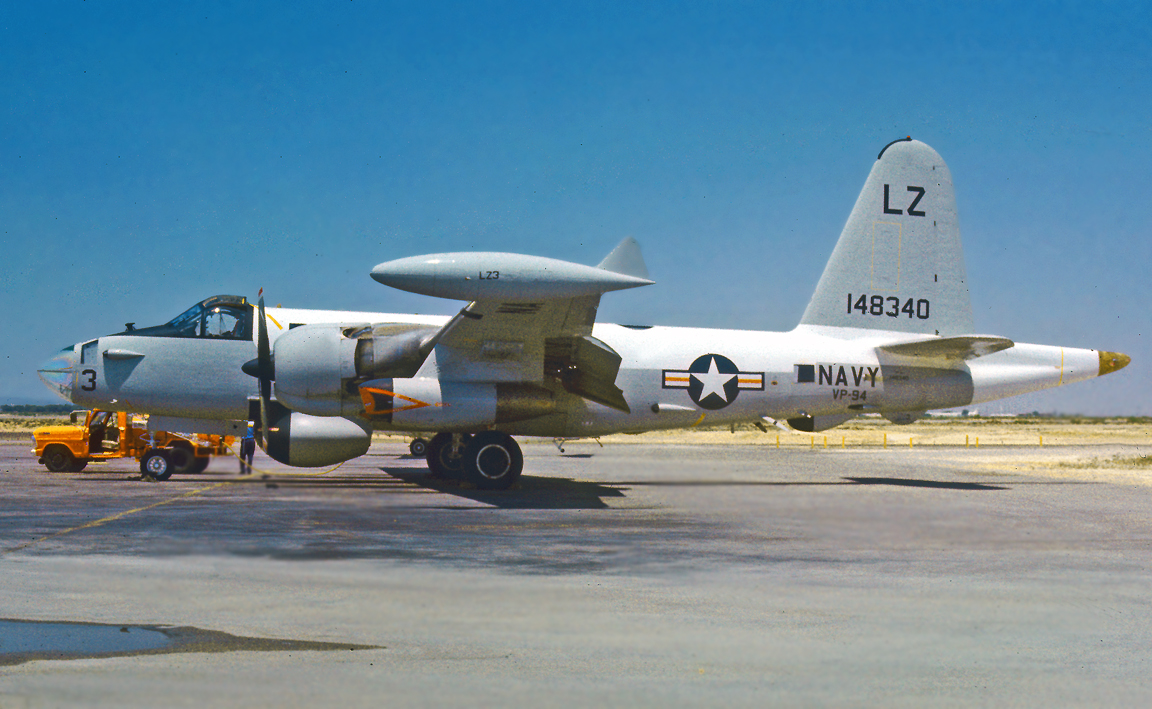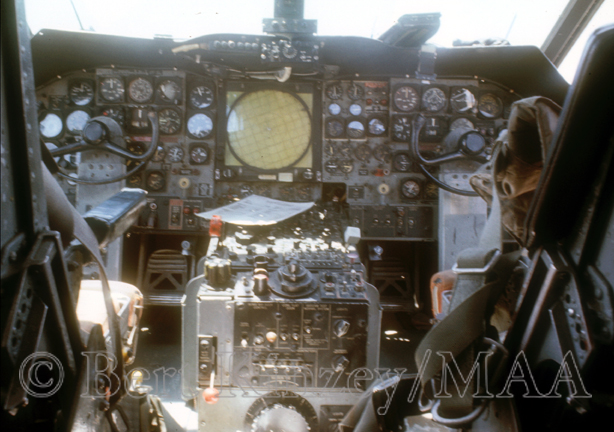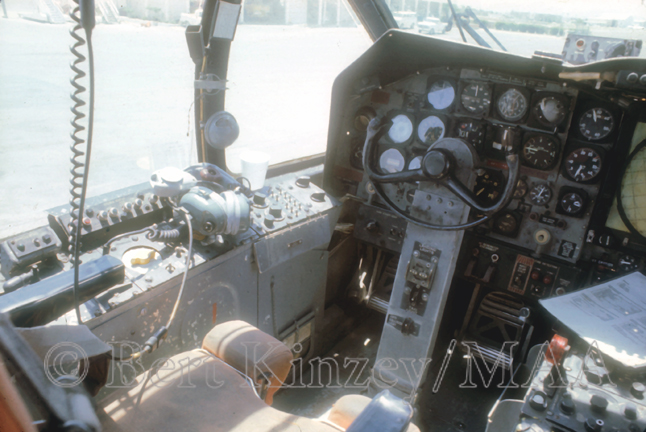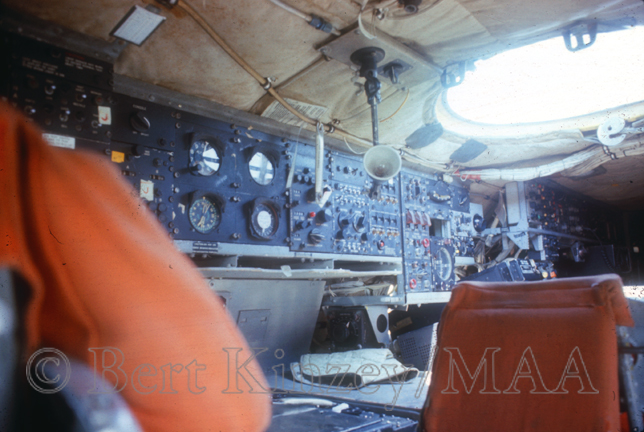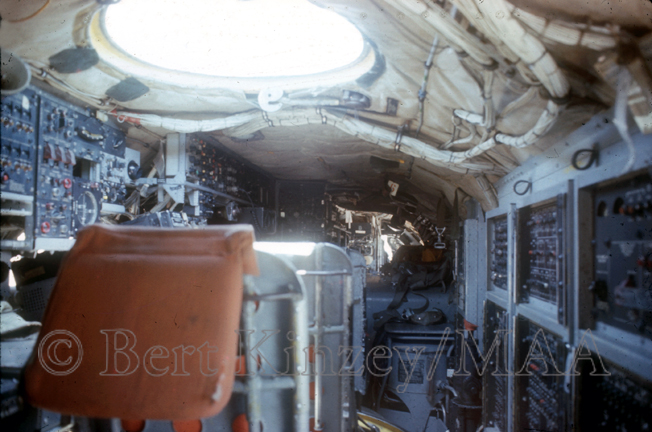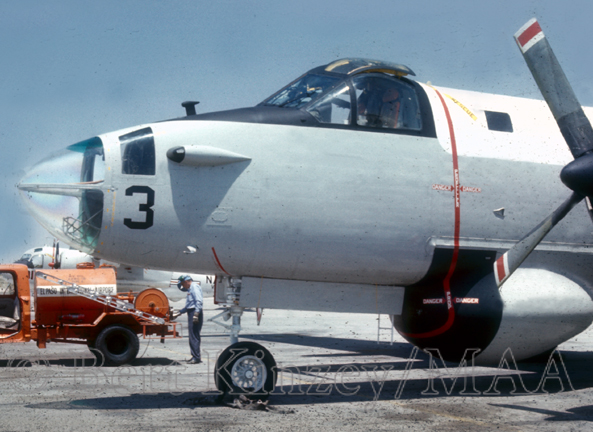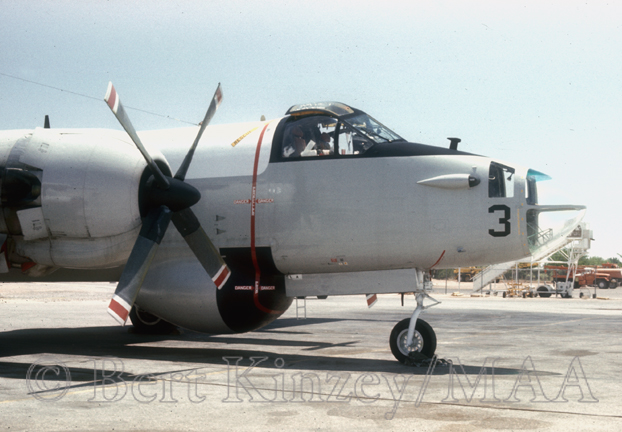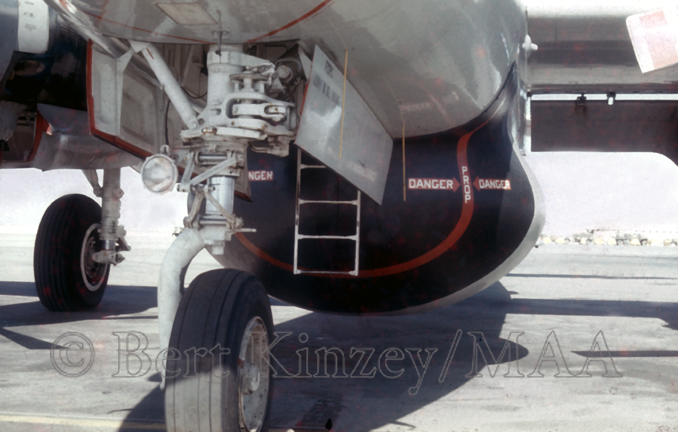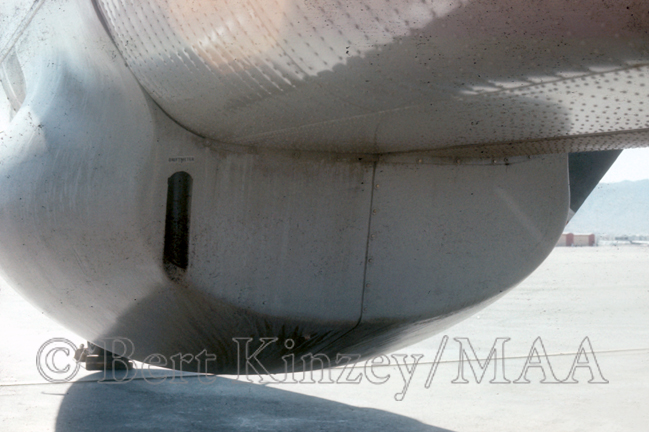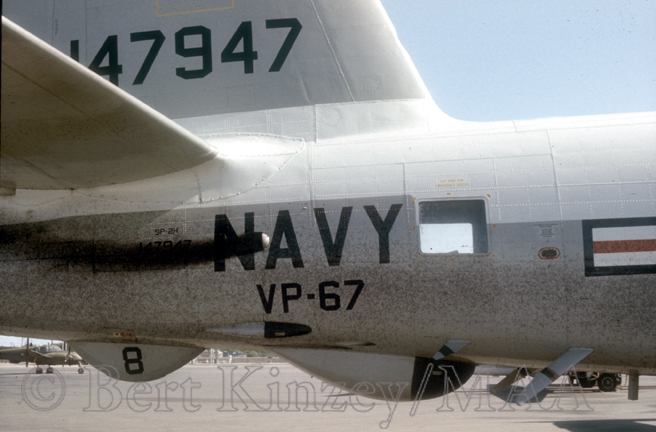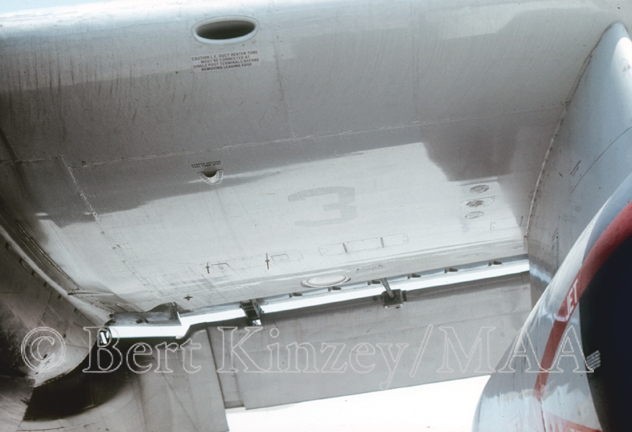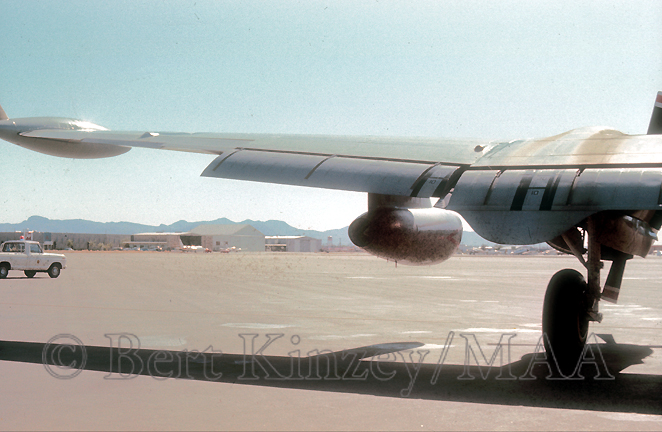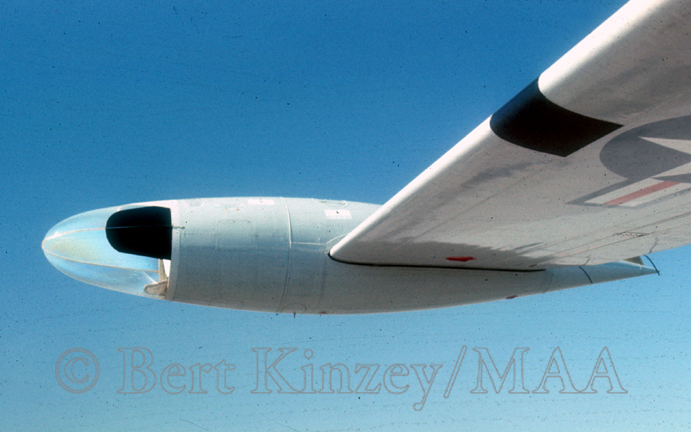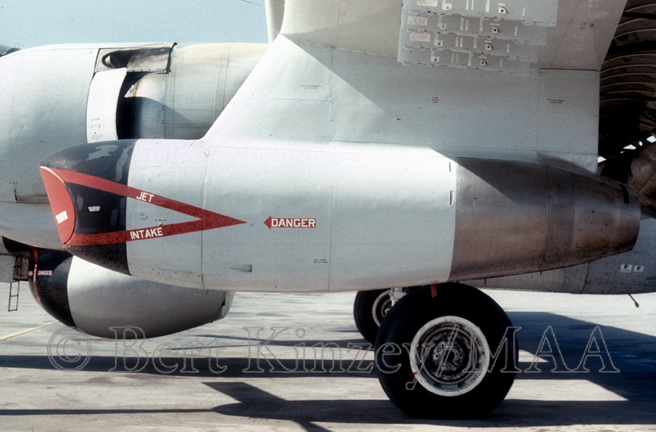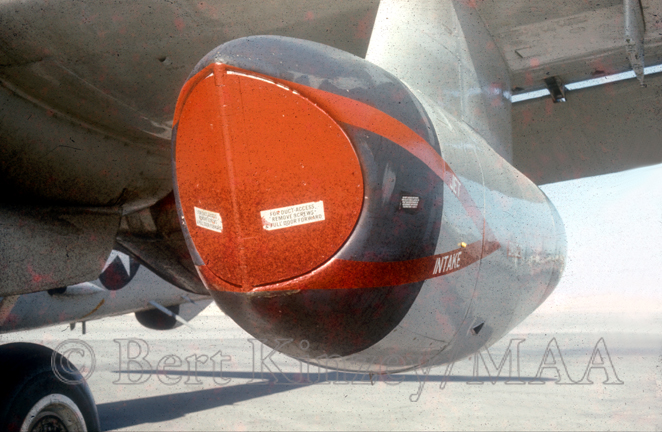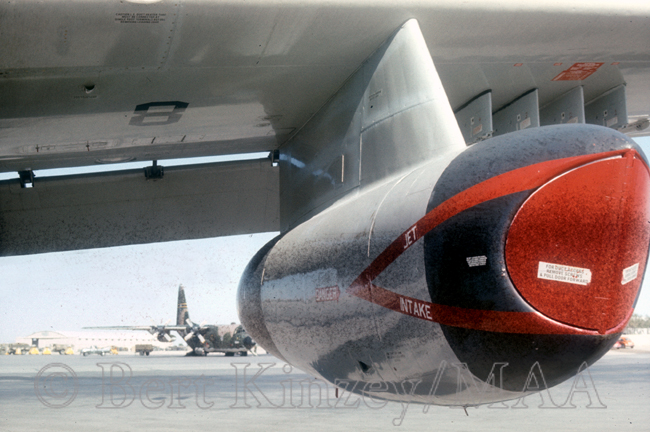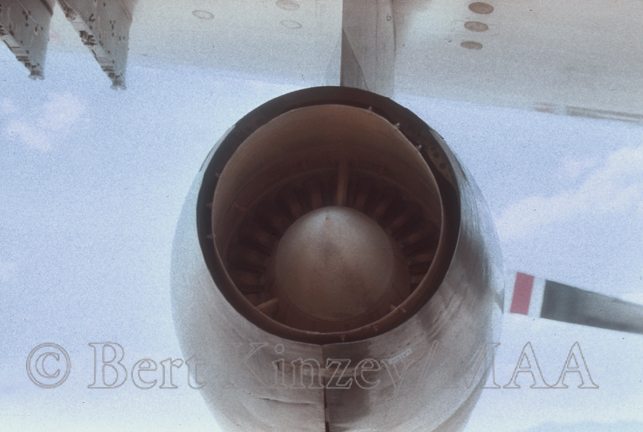Design work on what was to become the P-2 Neptune began as a private venture at Lockheed Vega on December 6, 1941, the day before the attack on Pearl Harbor. Known as Model 26, the project was under the direction of Jack Wassall.
The initial design featured gun turrets above and below the fuselage, as was common on twin-engine aircraft of that day, and it looked much like the first prototype that would not fly for several years. During World War II, emphasis was focused on producing and enhancing proven designs to fill a given mission. This extended the gestation period for most new designs and new concepts like that represented by the Model 26.
The Navy held to the belief that flying boats were better than land planes for patrol duties, and the majority of Navy patrol aircraft were flying boats throughout World War II. However, the Navy also used quite a few land-based planes for patrol duties, and these included Lockheed’s PBO-1 Hudson, PV-1 Ventura, and PV-2 Harpoon. North American’s outstanding B-25 Mitchell was adapted for use by the Navy as the PBJ, and Consolidated’s long range B-24 Liberator was flown by the Navy as PB4Y-1. The PB4Y-2 Privateer was an extensively modified B-24 optimized for long range maritime patrol by the Navy.
With these aircraft, the Navy gained considerable experience operating patrol aircraft from land bases, and following the war, the percentage of the patrol aircraft that were land based began to slowly increase. While flying boats continued in operation until the mid-1960s during the war in Vietnam, the percentage of land based patrol aircraft over flying boats steadily increased until all of the Navy’s patrol aircraft were land based before the war in Vietnam ended. The P-2 Neptune played a large part in this long, but important, transition.
It was not until April 4, 1944, that the Navy placed an order with Lockheed for two prototypes and fifteen initial production examples of the Model 26. The Navy designated these aircraft P2V, standing for Patrol, Second Type, and the V being the Navy’s designator for Lockheed. The approved design carried a crew of seven, including a pilot, copilot, bombardier-navigator, radio operator, and gunners to operate the three gun turrets.
The weapons bay could carry two torpedoes or up to twelve 325-pound depth charges. Alternatively, four 2,000-pound bombs, eight 1,000-pound bombs, or sixteen 500 pound bombs could be carried in the weapons bay. Offensive weapons could be mixed in a combination suited for the specific mission, with the maximum load being 8,000 pounds. Defensive armament included six .50-caliber machine guns with two in a nose turret, two in a tail turret, and two in a turret on top of the fuselage. Power was provided by two Wright R-3350-8 radial engines, each producing 2,300 horsepower and turning a four-blade propeller.
An unusual feature of the design was known as the “Varicam Tail.” This was a device inside the horizontal tail surfaces just forward of the elevator hinge line. It allowed the camber of the horizontal tail to be varied in flight, thus changing the trim of the aircraft depending on the loading and the resulting changes in the center of gravity.
The first XP2V-1 prototype made its initial flight on May 17, 1945. The fifteen initial production P2V-1s that followed were essentially the same as the two prototypes, but they also had provisions under the wings to carry external armament. There were sixteen stubs for carrying 5-inch rockets, or four of the larger 11.75-inch Tiny Tim rockets could be loaded.
Long range capability is an essential requirement for a patrol aircraft. To demonstrate the aircraft’s incredible range, the third production P2V-1, BuNo. 89082, officially named “Truculent Turtle,” but simply called “The Turtle,” was modified to carry extra fuel to set a world distance record for unrefueled flight. This amazing accomplishment took place in September 1946. Taking off from Perth, Australia, the P2V-1 headed for Washington, D.C. Although it ran into bad weather, including a head wind and icing conditions that forced it to land in Columbus, Ohio, the record was still set at 11,236 miles. The record setting flight required 55 hours and 17 minutes of flying time. This smashed the previous record set by a USAAF B-29 of 7,916 miles flying between Guam and Washington, D.C. For years, “Truculent Turtle” was preserved in Norfolk, Virginia, but it is now on display at the National Museum of Naval Aviation in Pensacola, Florida.
VPML-2 became operational with the P2V-1 in March 1947, and the aircraft, named the Neptune, continued in production until April 1962. Over that span of time, seven major variants were produced for the U. S. Navy along with dozens of sub-variants. Additionally, the P2V-Kai version with two turboprop engines and two turbo-jet engines was produced for the Japanese Self-Defense Force.
The second production version was the P2V-2 which had uprated R-3350-24W engines producing 2,500 horsepower. By using water injection, this could be increased to 2,800 horsepower. The four-blade propeller used on the P2V-1 was replaced with a three-blade Hamilton Standard propeller. During the production run of the P2V-2, starting with the twenty-fifth aircraft, the defensive armament was changed by replacing the two .50-caliber machine guns in the tail with two 20-mm cannon. The nose was redesigned, and six fixed 20-mm cannon were installed to provide the aircraft with tremendous firepower to the front. Additionally, a search radar and other electronics were added inside the nose. An electric de-icing system replaced the alcohol system used in the P2V-1. Jet Assisted Take-Off (JATO) bottles could be added to the fuselage to help heavily loaded P2V-2s get into the air. The first flight by a P2V-2 took place on January 7, 1947, and a total of 81 was delivered.
Two P2V-2s were modified for mapping operations in Alaska. Skis were attached to the landing gear, and the skis also mated to fairings under the nose and engine nacelles to serve as the gear doors when retracted. All armament was removed. These two Neptunes were called “Polar Bears” and given the designation P2V-2N.
The P2V-3 was generally the same as the P2V-2, but had R-3350-26W engines which offered a significant increase in power. Using water injection, 3,200 horsepower could be obtained for take-off and short periods, and dry horsepower was rated at 2,700. Jet augmenter exhaust stacks used the engine exhaust to provide additional thrust for the P2V-3.
A total of 83 P2V-3s were produced in several sub-variants. Forty were standard P2V-3 patrol versions. Eleven P2V-3Cs were modified to serve as carrier-launched nuclear bombers as an interim measure for providing the fleet with a long range nuclear strike capability. Although the heavily loaded P2V-3Cs could launch from an aircraft carrier using rocket-assisted-take-off (RATO) bottles, they could not return and recover aboard the carrier. Instead, they had to land at a friendly land base or return to the carrier and ditch. Ten of the P2V-3s and six P3V-3Cs were modified to the P2V-3B configuration. These could also deliver a nuclear bomb and were equipped with the AWB-1 Low Level Bombing System. The final thirty P2V-3s were delivered with an APS-20 search radar under their forward fuselage and were designated P2V-3Ws. The installation of the APS-20 required a much larger radome under the forward fuselage. Two P2V-3s were modified as P2V-3Z armed and armored combat transport aircraft. These had four-blade propellers and were used to transport high-ranking military and civilian personnel in combat areas.
In November 1949, the P2V-4 made its first flight. This version of the Neptune was very much the same as the previous P2V-3W, but long range fuel tanks could be carried under the wingtips to increase range and loiter time. As production of the P2V-4 continued, the engines were uprated to R-3350-30W Turbo-Compound engines which offered lower fuel consumption, and all P2V-4s were fitted with four-blade propellers. A powerful searchlight was installed at the forward end of the starboard tip tank.
The P2V-4 was equipped with radio sonobouys which could be dropped into the water to listen for submarines which were staying submerged far longer through the use of snorkel equipment. An extra crewman was added to operate the sonobouys. This feature caused the P2V-4 to be dubbed the “Snorkel Snipper.” A few P2V-4s were still serving in the Naval Reserve in 1962 when the Department of Defense directed the standardization of aircraft designations, and remaining P2V-4s were redesignated P-2Ds.
The first version to show truly significant changes to the original design was the P2V-5 which first flew on December 29, 1950. A total of 424 P2V-5s were produced, making it the most numerous of all Neptune variants. To increase defensive armament, an Emerson turret with two 20-mm cannon was installed in the nose. The tip tanks, added to the previous P2V-4, were redesigned and moved up to the centerline of the wingtip. They had a fin which improved the lateral stability of the aircraft and also insured that the tank fell clear of the aircraft when dropped. A searchlight was housed in the forward end of the starboard tank, and an APS-8 search radar was located in the port tank. The flight deck was raised to a slightly higher position than it had been on previous variants, and the glass panels in the cockpit were increased in size to provide better visibility.
Following delivery, most P2V-5s had a Westinghouse J34-WE-34 turbojet engine added under each wing and were redesignated P2V-5Fs. In order to make room for these engines, four of the rocket stubs under each wing had to be removed. It should be noted that the jet engines were not running all the time, but were used to provide extra power on take-off and when needed during the flight. To make best use of the increased speed provided by the two jet engines, the top turret and the Emerson nose turret were removed. The latter was replaced with a clear observation nose cone. The addition of a long “stinger” tail boom to the aft fuselage also eliminated the tail guns, leaving the aircraft without any defensive armament. The tail boom housed magnetic anomaly detection (MAD) gear. In 1962, P2V-5Fs still in the inventory were redesignated P-2Es.
Several P2V-5Fs were converted to drone control aircraft and redesignated P2V-5FDs (DP-2E in 1962). Other sub-variants included the P2V-5FE (EP-2E), which had additional electronic equipment, and the PV2-5FS (SP-2E), which had enhanced anti-submarine detection capabilities in the form of the Julie/Jezebel active and passive detection systems.
The U. S. Army acquired P-2Es for electronic warfare missions in Vietnam. These Neptunes were redesignated AP-3Es and were fitted with electronic countermeasures and electronic sensing equipment. The glass nose cone was replaced with a solid nose. They were flown by the 1st Radio Research Company based at Cam Rahn Bay from 1967 to 1972.
Another short-lived sub-variant of the P2V-5 (P-2E) was the OP-2E, which, like the AP-3E, was modified for use in Vietnam. OP-2Es had their APS-20 radome and MAD tail booms removed. A smaller radome was located under the nose, and a camera was added beneath the aft fuselage. Gun pods could be carried under the wings. OP-2Es were used to drop passive sensors along the Ho Chi Minh Trail to detect enemy movement along that major infiltration route.
The P2V-6 (P-2F after redesignation) had increased armament capabilities which allowed it to carry a wider range of weapons, including aerial mines and other new weapons that were entering the inventory. The nose was slightly longer than on previous Neptune variants, and the Emerson nose turret reappeared with its two 20-mm cannon. The APS-20 radar was replaced with the APS-70, and this meant that the radome beneath the forward fuselage could be smaller. P2V-6s were powered by R-3350-36W engines. The engine nacelles were made of stainless steel, which was stronger yet lighter than the previous nacelles.
A total of 67 P2V-6s were produced, and these were followed by 16 P2V-6Bs, however, this designation was then changed to P2V-6M. These later became MP-2Fs in 1962. These sixteen Neptunes could employ the Fairchild AUM-N-2 Petrel missiles. These missiles carried a standard aerial torpedo, and when it hit the water, the torpedo would continue on beneath the surface to destroy a submerged submarine.
Like the two previous Neptune variants, many of the P2V-6s had the Westinghouse J-34 jet engine pods added under their wings as a post production upgrade, and these became P2V-6Fs. The designation was changed to P-2G in 1962. Some P2V-6s were converted for use as trainers and given the designation P2V-6T (TP-2F). These training aircraft did not have the jet engines installed.
The final production variant of the Neptune was the P2V-7 (P-2H) which first flew on April 26, 1954. This version had the jet engines installed during production for aircraft delivered to the U. S. Navy, although 25 ordered by Canada did not. However, the jet engines were later installed on these aircraft as well. The fuselage was longer, and the cockpit enclosure had a noticeable bulge to increase the field of view. Originally, P2V-7s were produced with the nose and tail turrets, each with two 20-mm cannon, but these were soon replaced with the clear observation nose and the MAD tail fairing. A total of 212 was delivered to the U. S. Navy. The final version to remain operational with the Navy for the original patrol mission was the P2V-7S, later redesignated the SP-2H. It included the Julie/Jezebel detection gear and the MAD gear installed previously on the P2V-6.
Four P2V-7s were modified for use in Antarctica and were designated P2V-7LPs (LP-2J). They had skis installed on their landing gear much like the previous P2V-2N used in Alaska. The smaller tip tanks used on the standard P2V-7 were replaced with the larger tanks, and sixteen JATO bottles could be attached to the fuselage to assist the aircraft into the air.
One of the most interesting developments of the P2V-7 was the AP-2H, four of which were modified from P-2H airframes for special missions in Vietnam. All anti-submarine gear was removed, and the MAD tail fairing was replaced with a 20-mm gun turret. Low light television equipment was installed under the nose, an APQ-92 radar replaced the APS-20 under the forward fuselage, and other electronic sensors allowed the crew to detect enemy movements. Exhaust suppressors were installed to make the aircraft more difficult to see at night. These aircraft were used for night and all-weather interdiction missions, electronic warfare missions, and for dropping sensors along the Ho Chi Minh Trail. They carried gun pods, bombs, grenade launchers, and rockets to attack enemy troops on the ground at night and during poor weather.
Seven Neptunes, originally designated P2V-7Us by the Navy, were ordered for the U. S. Air Force. They were designated RB-69As by the Air Force and were used for clandestine operations throughout the 1950s and 1960s. These aircraft were fitted with a multitude of sensors and a side looking radar to gather electronic intelligence (ELINT).
One last Neptune variant is worthy of mention. Kawasaki Industries of Japan, under license from Lockheed, built the P2V-kai (P-2J) version for the Japanese Self Defense Force. The P2V-kai was powered by two General Electric T-64-IHI-10 turboprop engines which were fitted with three-blade Hamilton Standard propellers. They also had the two J-34 turbojet pods under the wings. The vertical tail and rudder were enlarged, and the main landing gear was changed to a dual wheel design with the wheels being smaller in diameter than the standard single wheel used on all other variants of the Neptune. Eighty-two were provided to Japan’s Maritime Defense Force.
In addition to the U. S. Navy, U. S. Army, and U. S. Air Force, Neptunes have been used by several foreign nations. These include Argentina, Australia, Brazil, Canada, Chile, Japan, The Netherlands, Portugal, Republic of China, and the United Kingdom.
Once retired from military use, a large number of Neptunes have been used in civilian service, with the most numerous being converted to fire bombers to fight forest fires.
SP-2H Data
| Wingspan | 103 feet, 10 inches |
| Wing Area | 1,000 square feet |
| Length | 91 feet, 4 inches |
| Height | 29 feet, 4 inches |
| Empty Weight | 47,456 pounds |
| Gross Weight | 75,500 |
| Maximum Speed | 345 miles-per-hour |
| Cruising Speed | 207 miles-per-hour |
| Service Ceiling | 22,000 feet |
| Range | 2,200 miles |
P-2 Neptune, SP-2H Detail Photos:
During the first half of 1975, three SP-2H Neptunes made a stopover on the transit ramp at El Paso International Airport. One was from VP-67 (PL tail code), one from VP-69 (PJ tail code), and one from VP-94 (LZ tail code). Bert Kinzey took the opportunity to take interior and exterior photographs of these three Neptunes, which were among the last in service with the U. S. Navy. The photographs in this set are a selection of detail photos taken of all three of these SP-2Hs. All three aircraft were essentially identical except for the unit markings. All photographs in this set are Detail & Scale copyright photos taken by Bert Kinzey.

